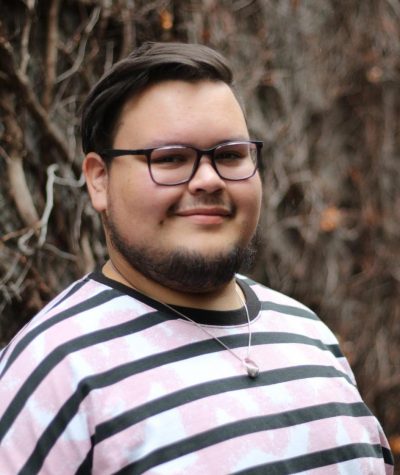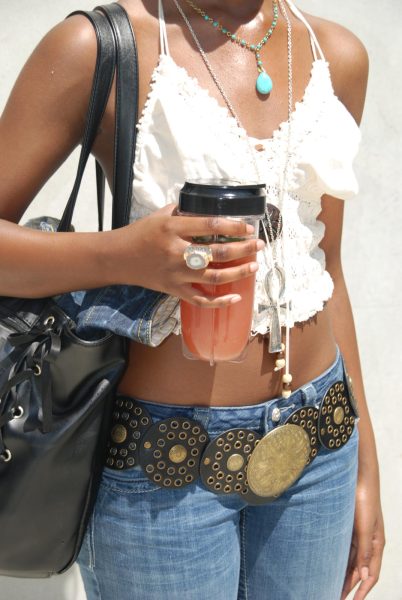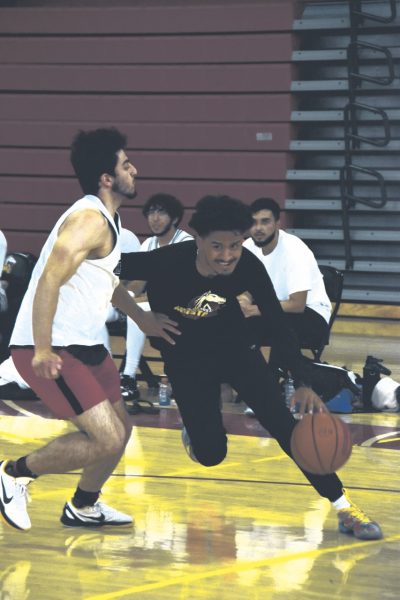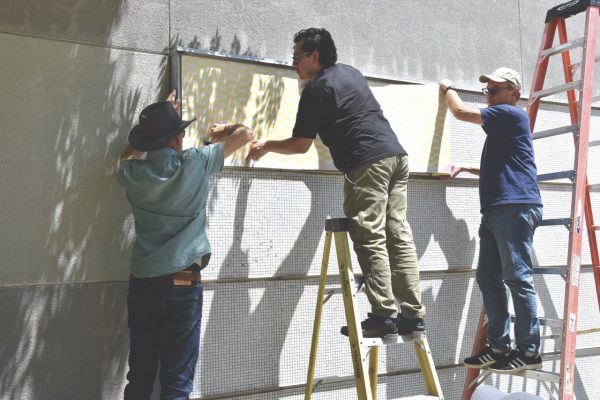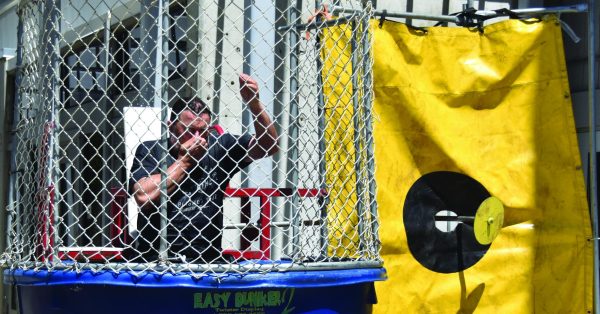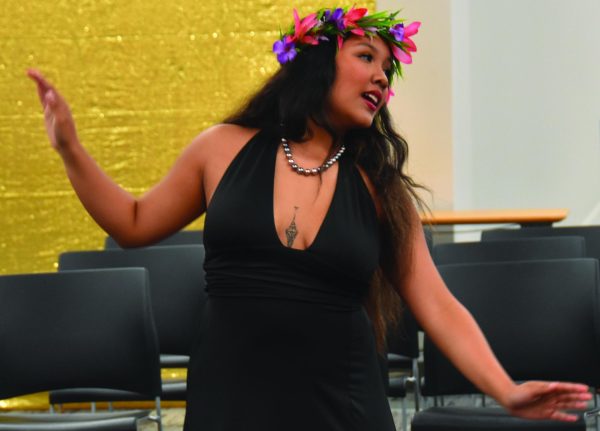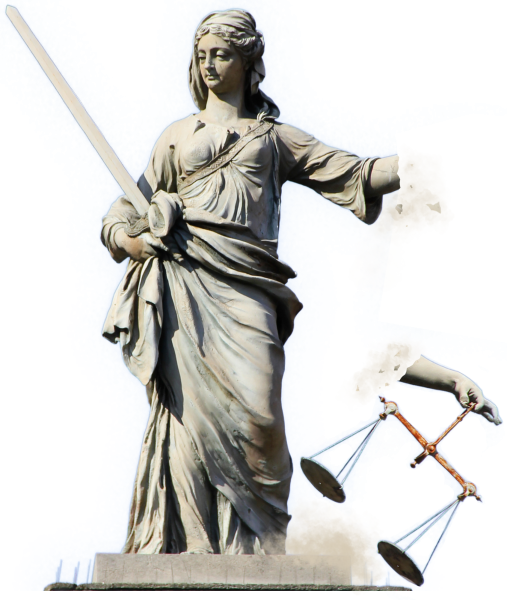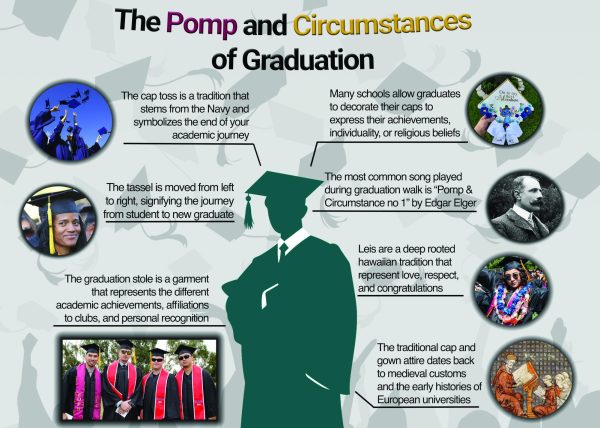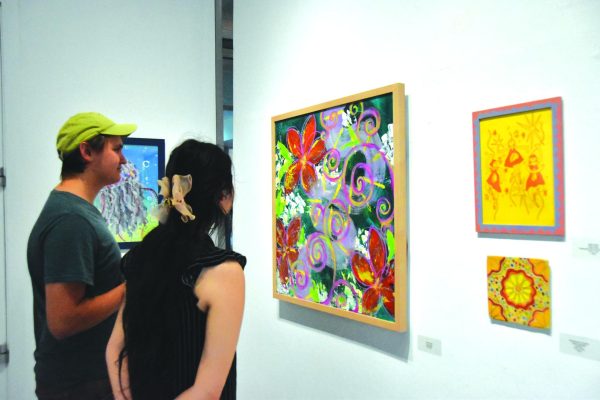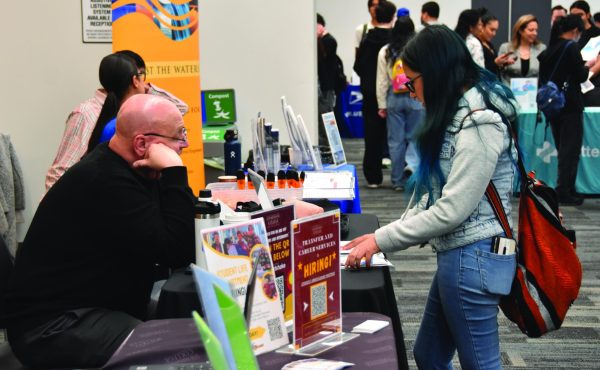Celebrating a diaspora
African heritage admired
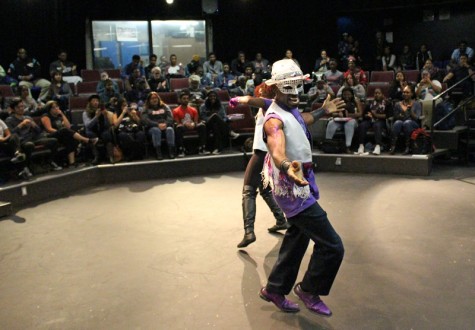
“Samba Funk” dance crew leader Aytchan “King Theo” Williams performs on stage with a fellow dancer inside the little theater on Wednesday Nov.11 as part of an event focusing on the African Diaspora
Some of the students who attended were there out of their own personal interest, but some were there because they were urged either by their teachers or to complete assignments.
“You know what, to be honest, I didn’t hear a lot about it beforehand Nick Garcia asked me to come and so I came to watch it,” said LMC student Mariah Jeffers.
After longtime LMC English instructor Tess Caldwell introduced the panel consisting of English teachers James Noel and Michael Yeong and “math extraordinaires” Dr. A’kilah Moore and Kwadgo Poku, the event began. Two students asked the panel questions while the panel responded accordingly.
Panelists were asked to explain their personal racial labels. Though Poku considers himself an African-American, he said “I don’t think I’m different from any other person in America who is black.”
Noel, whose Caribbean-native family moved to England, explained a popular label nowadays is “black British,” but he doesn’t quite identify with this label, because racial identities are “quite complicated.”
“Sometimes racial labels can be problematic because they don’t tell the whole story.” Yeong said “Jesse Jackson came up with the term African-American, but I define myself as Afro-American.”
“I really got a lot out of it and it was totally not what I was expecting,” said Jeffers.
All four-panel members noted the “Motherland” as being a high priority and great inspiration for them.
Yeong, who’s been to Mali and Senegal, said “I had a lot of fun and learned a lot about African people and my connection to Africa.”
Both Noel and Moore have never been to any part of Africa but have expressed interest is going. Moore explained she is waiting until her kids get older and Noel noted that it’s definitely on his bucket list.
In an effort to bring light to the topic of unification, the speakers were asked about commonalities between black people all over the world.
“Perseverance, tenacity and resilience — black people everywhere have those things,” said Moore. “We can survive, we can figure it out, we can make it through anything.”
Yeong said a lot of cultural similarities are centered on language. He talked about the difficulties and advantages of being part Jamaican and part Chinese. He then joked that the line “Chinese from the waist up and black from the waist down” got him a date once, which went over big with the audience.
Noel said a common link “is in the way black people express themselves through music,” particularly politically themed music. “In England, there was a deep sense of protest, especially in the 60s,” he said.
The music usually dealt with social injustice and poor treatment of people of African descent, not only in England but in North America as well.
The time allotted for the panel ran out but not before they were asked what inspired them to immerse themselves in the field of work they’re in.
Yeong said he’s had “various black and brown teachers” who’ve encouraged him to further his education and “become a good teacher.” While working as a high school teacher in New York City, he observed the differences in “the way those teachers taught students and how.”
A group of people left after the first part but this didn’t discourage the next act, a group of dancers who call themselves “Samba Funk.”
Emphatic dance crew leader “King Theo” Aytchan Williams told the audience that this wouldn’t be an experience where you can just observe the performers; there would be plenty of chances for them to participate as well.
“The African experience is not a lecture — it is not a spectator sport,” he said.
To illustrate this point, there was a call and response from one of the troupe’s drummers and audience members did not hesitate to participate.
Betwixt drumbeats, King Theo gave short history lessons about the ceremonies behind these songs and the history of the dances exhibited. He explained why he and his crew call themselves, “funkquarians” — it’s to honor African ancestors who struggled during the Transatlantic Slave Trade but specifically the babies who were thrown overboard on the journey to North America.
To make things more inclusive, Williams said, “Just because you speak Spanish, doesn’t mean we aren’t talking to you.” And he added that there are people of African descent all over the world.
Volunteers were then invited down for a mutual dance lesson lasting for about ten minutes. Attendees clapped and stood for those participating on stage. The dance moves were a combination of traditional South American and African dance moves and retro to contemporary African American dance moves.
The ending of the dance segment signified the end of the event and the collective of audience members made their way out of the theater.
LMC student Du’Praiseja Smith, who was only able to make the second half, said the show lived up to her expectations.
“I was not disappointed. My favorite part was when everyone got to dance onstage. The part that resonated with me the most was during the drum call, when he asked what the drums were saying to us,” said Smith, “that they were speaking.”
I started writing for this paper in 2013. Since then, I’ve held a variety of positions on this paper. My only goal is help my fellow writers as well...

